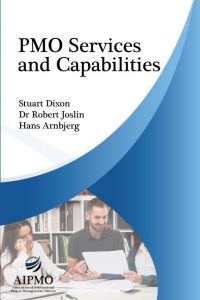When I first started this blog, a while ago I thought it would be easy. After all, all you need to do is throw out about 300 words. How difficult could that really be? All you need to do is to pick a topic, say what comes into your head and upload it onto the website. Easy-peasy.
Well before you embark on this there are certain things to think about.
What to write about
This is the first issue that comes, how do you choose your subjects to talk about? At first that is easy as there are lots of subjects that you want to give your opinion about. However after a while that seems to dry up. What happens then? Well if my blog is anything to go by you dry up and it becomes another digital desert with nothing happening. How many blogs are there out there which have lasted about a year and then nothing.
For the longevity you need a variety of subject matter, or alternatively you could be narrow focused and just be great at one topic.
In order to get the ideas flowing there are several sources (that I have found/seen). Firstly there can be items you encounter in your work life and you think would make a subject for the blog. Secondly you can get ideas submitted to you. Having people submit questions which you then answer is a good suggestion, but you probably need a reputation first. Thirdly you can respond to other people’s blogs. Linked In can be a good way of sourcing these topics. It then gives you somewhere to publish the response. Put a quick comment on the Linked In article and then a link to your blog for more detail
When to write
So you have found something to write about, step 1 completed. Now comes the challenge of when to write about this. I am fortunate and I have a long train journey, with access to a table to rest my electronic device on. I have used both a small portable laptop and an iPad to write my articles on. Nowadays I prefer the iPad option, because this both allows me to type out an article or watch a video, or play a game, depending on the mood I am in (or all 3 on a journey if I choose to). Having a physical keyboard on the iPad makes this option much easier. Also not using a laptop makes it feel like I am not working, and I don’t get into that mode of having to look (and think about) those emails until I get into the office.
I could do this at home, or in my lunch hour, but I find that there are other things to do in those times. If the first thing you do when you come home after 12 hours out is to write a blog for an hour you are either single, or have a very understanding partner/family
Getting to publish
One of the downsides to working on the train is the distinct lack of an internet connection (no wi-fi on the train and too many tunnels anyway). This means I can’t do what every app expects me to do nowadays and save my work to the cloud. That has to wait until I get home.
However this gives me an advantage in the fact I can copy the words that I have written into the actual blog. This is when I get to review what I have written. The advantage is that there is at least a few hours between the original piece being written and it being published. This give me some perspective and I can be a bit critical and look to reword the article. Although most of my articles are written in that stream of consciousness style, a chance to review and check the article is always welcome
Actually publishing
Having copied the text into the website then there is the matter of looking for a few pictures to highlight the article. This is normally a google search to find something that is free to use, I wish I was talented enough to design/produce my own pictures, but unfortunately that isn’t my skill. This is the time to think about any links I may want to put into the article. This can be important if you are commenting on someone else’s piece, or an event you attended (or hope to attend) or book you have read. The other thing is do you want to put a summary of the article as a headline to grab people’s attention – useful if you are cross posting on Linked In, Twitter etc. Having re-read the article it can be easy to work out what that may be
When to publish
I have read lots of articles about the best time to publish so it gets the most views. Are you hoping to catch people on their way to work, at lunchtime, on their way home. If that is important to you how do you catch the early people if you have only published at 9pm at night? Look in the settings for your blog app and there maybe some settings which allow you to defer publishing until a set time.
However I think the more important one, if you want to build up a following, is that you need to publish regularly. How often is that? It could be weekly (if you are that organised), but monthly is probably OK (well that’s my plan this time around)
And that’s it
So that is all you need to do. Easy-peasy really. Apart from having written your first article you then need to do it all again for next time. Time to start with that blank page and that lovely flashing cursor.



